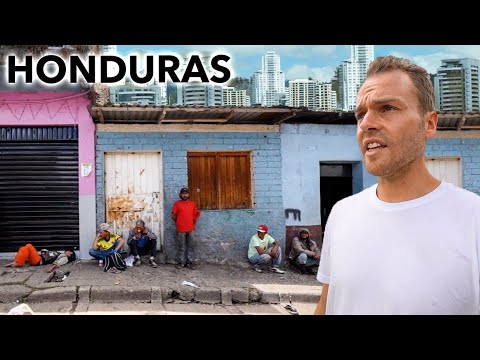
Tegucigalpa, the bustling capital city of Honduras, pulses with life and culture. Nestled in a valley surrounded by rugged mountains, its streets offer both vibrant daily exchanges and historical insights. However, exploring these paths on foot is fraught with underlying dangers that have marked Tegucigalpa as one of the riskier urban centers for pedestrians.
#### Urban Layout and Infrastructure Challenges
The layout of Tegucigalpa is a testament to its colonial past and rapid modern expansion without corresponding infrastructure developments. Narrow streets wind unpredictably, sidewalks are often uneven or nonexistent, and lighting is inadequate in many areas after dusk. For tourists unfamiliar with the terrain, simply navigating from one point to another can be perilous.
#### The Perils of Crime
One cannot discuss walking in Tegucigalpa without addressing the elephant in the room: crime. Honduras has struggled with high rates of violence and crime due to various socio-economic factors including poverty, political instability, and drug trafficking. This has made Tegucigalpa particularly notorious for its high levels of urban crime.
Petty crimes such as pickpocketing and purse-snatching are commonplace in crowded areas such as markets or bus stations. More concerning are incidents involving armed robbery which can occur even during daylight hours and in areas frequented by tourists.
#### Gang Activity
Gang influence is significant in certain parts of the city, where territories are clearly demarcated yet invisible to the untrained eye. Innocuous acts such as wearing certain colors or simply being an outsider can inadvertently provoke confrontations or hostility from local gang members.
#### Safety Tips for Walking through Tegucigalpa
For those who choose to explore Tegucigalpa on foot despite the risks, several precautions can mitigate potential dangers:
– **Stay Informed:** Always be aware of your surroundings. Keep up-to-date information about which areas are considered unsafe.
– **Travel Light:** Carry only essentials and avoid displaying valuables like smartphones or cameras conspicuously.
– **Avoid Night Walks:** Limit exploration on foot to daylight hours when more people are around.
– **Local Guidance:** Consider hiring a local guide who knows which areas to avoid and can provide insights into safely navigating the city.
– **Group Tours:** Whenever possible, travel with a group as there’s safety in numbers.
#### Public Perception vs. Reality
While it’s crucial to highlight these risks, it’s equally important not to paint an entirely bleak picture. Many visitors traverse Tegucigalpa without incident, enjoying its rich cultural offerings from museums showcasing pre-Columbian artifacts to markets brimming with local handicrafts. Moreover, recent efforts by local authorities aiming at improving safety by increasing police patrols have begun changing perceptions slightly.
#### Conclusion – A City of Contrasts
Tegucigalpa embodies a startling contrast between beauty and danger. While its streets whisper tales of history and culture ripe for exploration, they also murmur warnings that necessitate cautious navigation through their complexities. Understanding these dynamics helps prepare visitors for an experience that respects both the city’s rich offerings and its undeniable challenges.
